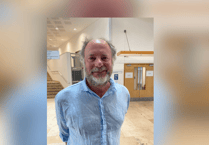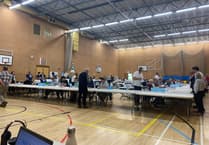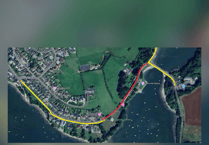Joan Tyler, who has died aged 100, worked in the Meteorological Office during the Second World War, providing crucial weather information for the South-West England approaches to the D-Day landings. Weather forecasting critically influenced the date of the landings.
Stormy weather caused the Allies’ Supreme Commander, General Eisenhower, to delay the landings. Then Joan and her colleagues forecast a brief weather improvement for the eve of D-day on June 5, 1944, that allowed Eisenhower to launch the invasion, catching the German forces, advised by their Met Office that the weather was too stormy for any invasion, by surprise.
Joan was born in December 1921 in Loddiswell, South Devon, the daughter of Ellen and John Walke, who were tenant farmers at Hartley Farm, Blackawton. Joan and her sister Betty grew up on the Farm in the pre-electric era, with paraffin lamps and candles for lighting and wood for heating. At age 11, she was sent to a girls’ boarding school in Kingsbridge. Her father died when she was 17, and with the loss of the breadwinner the family moved to Lilwell, where her mother enterprisingly set up a poultry farm. Conditions again were basic, with water drawn from a stream, and they had to catch a bus to Dartmouth market to sell the eggs. At one stage she contracted peritonitis and became critically ill, but survived. On another occasion, she was chased by a bull in a field. There appeared to be no escape as the bull closed in on her. With lightning speed and agility beyond herself she leapt over a large hedge to safety.
During the War Joan applied to join the Met Office, being fascinated by the way balloons were filled with hydrogen gas and released to track air flows. She passed an entrance exam and, since forecasters were required in military service, she joined the Women’s Auxiliary Air Force, rising to the rank of Sergeant, with responsibility for organising the work of the teams gathering weather data throughout the South West. In 1942 she was stationed to the Met Office HQ in Plymouth, where she witnessed the city centre grimly reduced to rubble from bombing raids. For protection, Met Office staff worked shifts underground. She collated data from the numerous stations that gathered weather information, then plotted the charts used by the forecasters, with one large wall used to chart data obtained for the whole Atlantic region. Normally, the females in the Met office wore skirts, but when they had to climb up a ladder to put data up on the Atlantic Wall, they were required, for modesty reasons, to wear trousers. On occasions when she was stationed outside Plymouth, she did achieve her prized goal of sending up hydrogen balloons to gather data. Prolonged working underground led to her developing eye strain, so she was posted to Perranporth until her eyes recovered.
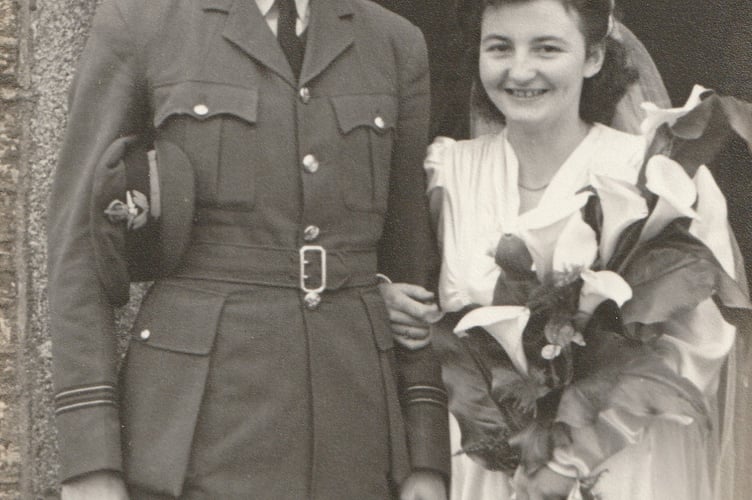
At Plymouth in 1942 she met Percy Tyler, another weather forecaster with a background in physics. He was posted to Gibraltar, where he forecasted for the allied War efforts in the Mediterranean and North Africa. Joan and Percy corresponded and romance blossomed. He was then posted to Nuneaton, and a pleasantly sympathetic posting for Joan to Honiley airport, just 12 miles from Percy, enabled them to see more of each other. They became engaged, and planned to be married in February, 1945. However, just before the wedding, Joan developed a severe rash and was rushed to an isolation hospital in Plymouth. It was a hospital for men: all the other patients were male, as were all the medical staff. The doctors were baffled and unable to diagnose her mysterious condition. Joan pleaded with them, “Let me out!”, but they kept her there under observation. As the wedding day loomed, she had to make her wedding plans from the isolation hospital. She was only released on the day before the wedding.
Their first married home was in Folkestone, then moved to Exeter in 1954, where Percy obtained a teaching post at Exeter College. At their home in Exeter, Joan was a full-time mother, raising 4 children. The eldest, Peter, would go on to study at Cambridge University, as would his two daughters in due course and currently one of their sons, spanning 3 generations. Her daughter Jane went into teaching and her other sons followed their father in studying physics, David becoming a professor at Manchester Metropolitan University and Jonathan a nuclear physicist at Berkeley nuclear power station. Her sister Betty married Reg Samson, of Lilwell and Woolston farms, and together they developed the Loddiswell Vineyard.
For many years Joan was secretary of the Exeter Workers’ Educational Association, attended philosophy courses, and belonged to the Exeter Forum, which provided a regular programme of talks. She supported the liberal party, acting as the agent and canvassing for Sir Robert Newton and David Morrish. Near her home, the Duryard Valley land was under threat from development for housing. Joan joined local residents’ vigorous opposition. They had a rota for maintaining a vigil outside the site, sitting down in front of the bulldozer to stop them. One morning, the builders could not start their bulldozer. It was rumoured that someone had put milk in the diesel tank. The council got involved and this was the start of setting up not only the Duryard Valley Park, but also two additional valley parks in Exeter. The houses were never built.
With support from her daughter and carers Joan lived independently in her own home until the age of 99. In her 100th year, at the 26th UN Climate Change Conference (COP26) in Glasgow, the Met Office produced a photographic display to celebrate over 100 years of weather forecasting and climate change For each year, they wanted someone born in that year who was also connected with the Met Office. Joan was chosen to represent the year of 1921, 100 years ago.
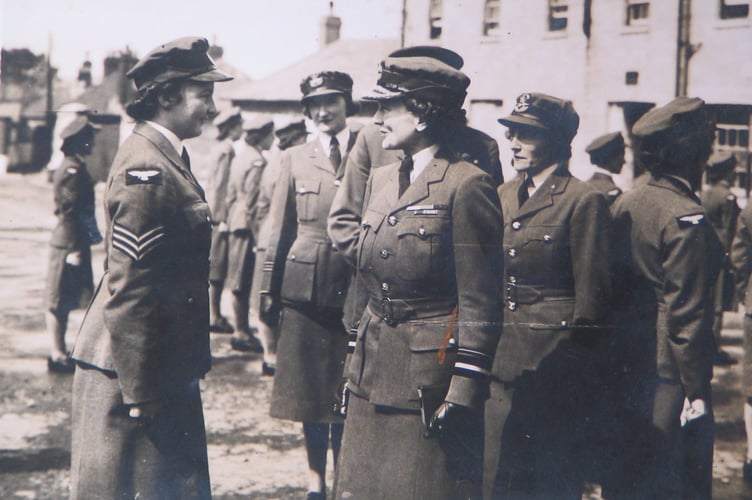
From the age of 100, she became blind with glaucoma. It was challenging for her to newly adjust to blindness at such a great age. Her family would read out books to her, such as on weather forecasting, and she was still able to lucidly recall the Met Office’s classification system of clouds. As they read to her stories of the War, such as Dunkirk and D-day, she was able to acknowledge the hand of God to overrule in the weather, which changed the course of history, bringing victory and an end to the War. Joan’s son Peter and daughter Jane predeceased her. She is survived by her sons David and Jonathan, 11 grandchildren and 9 great-grandchildren.

